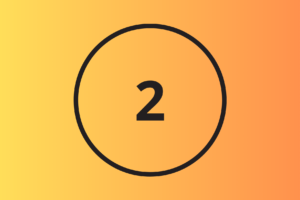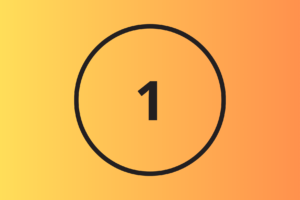
My answer will be in the form of an e-mail to a friend of mine, 1 year younger than me.
Dear Robert,
I hope my e-mail finds you well.
As discussed last night over the phone, I revert to you now with the technical details related to my AS Magazine assignment.
Before starting my assignment of developing a magazine prototype I didn’t expect to combine so many technologies, i.e. software, hardware and online.
As you mentioned to me that you enrolled for the Media Studies course starting next year, I noted down all the technologies I used for this my assignment. I hope this would help you navigate faster through the technical side of your research so that you could dedicate more time to the layout and the content itself of the magazine prototype of your choice.
Hardware
- Mobile phone: Samsung Galaxy Z Fold 5 – I used it for photo shooting & editing. I didn’t think I needed a professional camera for this project as mobile phones have so advanced camera incorporated nowadays. Anyway, I do not have an artistic eye, so my prime objective was to be able to obtain simple, yet high quality images.
- Laptop: Asus Zenbook – this is the device used to research & create my blog and my media product.
- Secondary monitor: Samsung monitor ultrawide – for better visibility and to allowing extended monitor for parallel usage of several apps.
Software
- Content management system (CMS): WordPress (WP) – the most popular online, open-source CMS – which I used to create, modify, and publish the digital content of my blog. I used WP to post information in the form of text, images, video and podcast.
- WordPress Plugins – these are software add-ons available to enlarge WP capabilities to support your needs. For example, in order to include in your blog posts a podcast, you need to install a plugin to do so. There are very numerous plugins available, both free and payable. I will list bellow the plugins I used (all are free to be installed and used):
- Elementor – Website Builder which I declare my plugin savior, as this has it all: drag and drop page builder, pixel perfect design, mobile responsive editing, and more.
- Image Optimizer– It automatically resizes and optimizes images. It even compresses images in bulk or on upload to boost your WordPress site performance. Considering my uploaded large unedited pool of photos from my work, this was a mandatory plugin.
- Ocean Extra – this helped me add some extra features and flexibility to my OceanWP theme.
- Qi Addons for Elementor – As for mobiles and tablets, widgets rule the appearance of blogs and websites, so I extendedly used Qi Addons for Elementor, which is a comprehensive library of flexible & easily styled widgets for Elementor developed by Qode Interactive.
- The Post Grid– After several unsuccessful attempts to make my posts look tidy when scrolling between them, I installed The Post Grid plugin as a fast & easy way to display WordPress post in Grid, List & Isotope view (filter by category, tag, author …).
- WordPress Importer– I used it to import my list of posts which I wrote during summer, after work.
- WPForms Lite– I used this Drag & Drop form builder to create my Contact page form.
- LiteSpeed Cache– High-performance page caching and site optimization from LiteSpeed. For this I took the tutorials advice for granted.
- Wordfence Security– Anti-virus, Firewall and Malware Scan. For this too I took the tutorials advice for granted.
- Seriously Simple Podcasting – which I used to post a podcast.
You will be able to find many other plugins but make sure you do not activate too many, as the performance of your website will be significantly decreased.
- Color palette generator: in order to apply a predefined color palette for the Global Colors of my blog, I helped myself with the app Huemint (https://huemint.com/). I only used it as I am not comfortable in choosing colors which go well together, so I followed default schemes web designers refer to. Maybe you will not need this app at all.
- Online graphic design tool: Canva (https://www.canva.com/). I used this tool intensively for designing all the visuals needed for my blog and my magazine: the logo of my website https://buildersally.com/, the flatplans, masthead, cover page, table of content and double spread article.
- Online tool to remove background: https://www.remove.bg/ which I used to obtain a transparent logo.
- Samsung Camera & Samsung Gallery: I used these apps for all my photoshootings and editing.
Online
Saying that the online resources pool is invaluable is axiomatic. The sky is the limit and you will find for sure many other references which would be more relevant to you. Yet I will list my own selection for your inspiration.
- Web hosting: Hostinger – for our media assignment there is no need to buy a customized domain. In my case, I wanted to have my own domain as I prepare to set up my own company after I finish my education. There are plenty of providers and subscription options. I opted for Hostinger as it was recommended to me by several people.
- Magazine analysis: in order to get access to a large choice of magazines of all genre to enable my magazines analysis task from the research & planning part of the media assignment, I signed up for https://www.magzter.com/ .
- Advice & Inspiration Sources: as I needed tutorials for using WordPress and other applications, as well as inspiration for my moodboards, photoshooting styles, suitable layouts for my magazine genre and for the content of my articles, I surfed social media and other platforms such as Pinterest, Instagram, Pexels, Reddit, Youtube and many others.
- Questionnaire: in order to design, send out and collect responses to understand my Target Audience I used Google Forms. I also used the charts proposed by Google Forms for summarizing the responses.
As you could intuit even without reading my long e-mail, technologies are tightly interconnected and nowadays we cannot make it without the synergies provided by this integration. The media studies assignment is one of the best trainings to learn how to optimize creativity and efficiency through this integration.
I hope that you will find my message helpful and that your curiosity will grow accordingly so that you could embrace an even larger pool of technologies for you assignments.
I wish you good luck and I look forward to receiving your feedback!
Yours,
Ciprian




